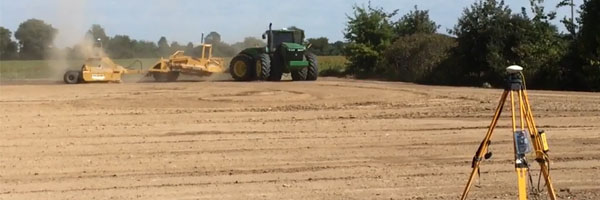Three Things to Know About Drift in Land Forming Projects
May 16, 2017


For years, the inherent risk of running land-forming operations with GPS has been that drift is a possibility. However, the wasted time that happens with drift is far less likely than the more common delays that happen with laser technology due to factors like wind and dust. Still, downtime is still a big concern when using GPS-based systems, which have long been unable to overcome the increasing magnitude and repeated occurrence of drift.
This reality was made apparent in April 2017 when land forming operations across the delta region were in full swing until GPS systems across the area started experiencing drift with an impact never before seen. This level of drift caused entire operations to shut down, costing a lot of time, money, and heartache. However, not everyone experienced this setback. And so it’s important to understand what happened, why it mattered, and how delays caused by drift can be avoided.
1 – Why does drift happen?
The GPS signal comes from shared satellites in orbit that broadcast a timestamped signal. Your equipment then uses the difference between the time of reception and the time transmitted from the satellites to calculate your precise location. Your altitude, satellite delays, as well as the number of satellites you have access to can affect your vertical accuracy. When outside forces disrupt the signal from the satellites, the accuracy of the measurements your equipment receives can vary, well beyond their normal operating range. This is a big deal when you’re talking about finishing work in land forming operations, especially since it’s a game of hundredths of a foot rather than tenths of a foot.
2 – Why does it matter?
A significant error caused by drift can exceed as much as four and a half inches in vertical accuracy, like what the delta area experienced recently, and that halts operations in their tracks. Traditional GPS land leveling solutions can’t compensate and operate successfully with that large of an error and the risk of creating sizable holes and high spots becomes too great for crews to continue in those conditions and they are forced to stop.
3 – How do you avoid downtime?
Using the example of what happened in the delta area, crews that were using laser solutions were able to operate as normal since they don’t rely on the signal from GPS satellites and wind and dust weren’t a major issue at the time. Additionally, crews using VerticalPoint RTK were not impacted by the drift since the technology is designed to scale, understand and deal with a wide range of errors unlike any other solution in the industry and to keep the crew up and running, even in the most challenging environments.
“Apparently, VerticalPoint saved [us] yesterday. All I’m hearing is horror stories…and I never saw anything.”- Will B., VerticalPoint RTK User. (Reported the day after major drift occurred in the delta region).
If the solution you’re using can’t deal with drift, the only thing you can do to is make the most out of your downtime when it does happen. This usually means halting finishing work and completing as much bulk work as you can until the signal is more reliable.
